How to Use Plantain for Bug Bites, Stings and Burns
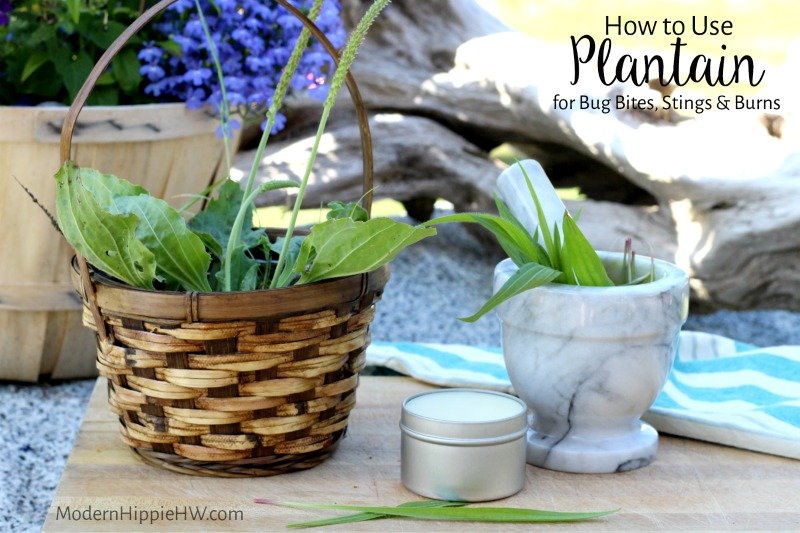 We were at a child's birthday party two years ago when I realized that I'm not your "average" parent. I remember the day clearly...It was a warm summer evening in July, and I was sitting around chatting with the moms, watching our children run around in the clover, when suddenly - screams. Blood curdling screams that could only mean one thing - bee sting. All the children huddled around the victim, hoping to sneak a peak of the wound.I ran over to the crowd to make sure... nope, not my child. But that didn't stop me. I ran in the opposite direction of the crime scene and up to the dusty driveway to where I thought I would find it growing along the edges - plantain.Sure enough, I found the species of some broad leaf plantain growing in the gravel, picked a couple clean-ish looking leaves, whipped them off of my shorts, popped them in my mouth, and began to chew on them as I headed back down toward the screams.I'll never forget the look on that child's face as I pulled the wad of macerated plantain from my mouth and stuck it directly on top of his bee sting. His mother to the right of me had the similar expression - it read, "WTF are you doing you crazy witch?"
We were at a child's birthday party two years ago when I realized that I'm not your "average" parent. I remember the day clearly...It was a warm summer evening in July, and I was sitting around chatting with the moms, watching our children run around in the clover, when suddenly - screams. Blood curdling screams that could only mean one thing - bee sting. All the children huddled around the victim, hoping to sneak a peak of the wound.I ran over to the crowd to make sure... nope, not my child. But that didn't stop me. I ran in the opposite direction of the crime scene and up to the dusty driveway to where I thought I would find it growing along the edges - plantain.Sure enough, I found the species of some broad leaf plantain growing in the gravel, picked a couple clean-ish looking leaves, whipped them off of my shorts, popped them in my mouth, and began to chew on them as I headed back down toward the screams.I'll never forget the look on that child's face as I pulled the wad of macerated plantain from my mouth and stuck it directly on top of his bee sting. His mother to the right of me had the similar expression - it read, "WTF are you doing you crazy witch?"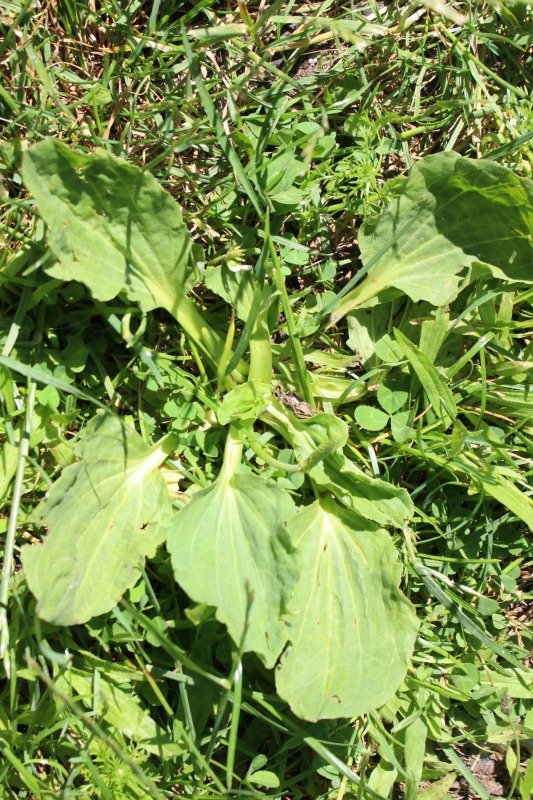 I quickly tried to explain the medicinal properties of the "weed" that I found growing along the driveway, and that "Native Americans used to use plantain poultices to draw out toxins from stings and bites....and that it even helps soothe the effects of poison ivy...." I started to ramble, and I was losing them...Until suddenly, the kid's cries suddenly subsided and he spoke, "It doesn't hurt at all anymore".To my relief, everyone's disgust quickly turned to intrigue.I'm already known as the "hippie" among my friends, but I think this took it to a whole new level. Regardless, everyone wanted the "recipe".Thank goodness the kid spoke up and confirmed that his pain had subsided - I have laughed out load since then, imagining what the scenario would have looked like it he instead kept crying and screamed out, "it's not working!" LOL.
I quickly tried to explain the medicinal properties of the "weed" that I found growing along the driveway, and that "Native Americans used to use plantain poultices to draw out toxins from stings and bites....and that it even helps soothe the effects of poison ivy...." I started to ramble, and I was losing them...Until suddenly, the kid's cries suddenly subsided and he spoke, "It doesn't hurt at all anymore".To my relief, everyone's disgust quickly turned to intrigue.I'm already known as the "hippie" among my friends, but I think this took it to a whole new level. Regardless, everyone wanted the "recipe".Thank goodness the kid spoke up and confirmed that his pain had subsided - I have laughed out load since then, imagining what the scenario would have looked like it he instead kept crying and screamed out, "it's not working!" LOL.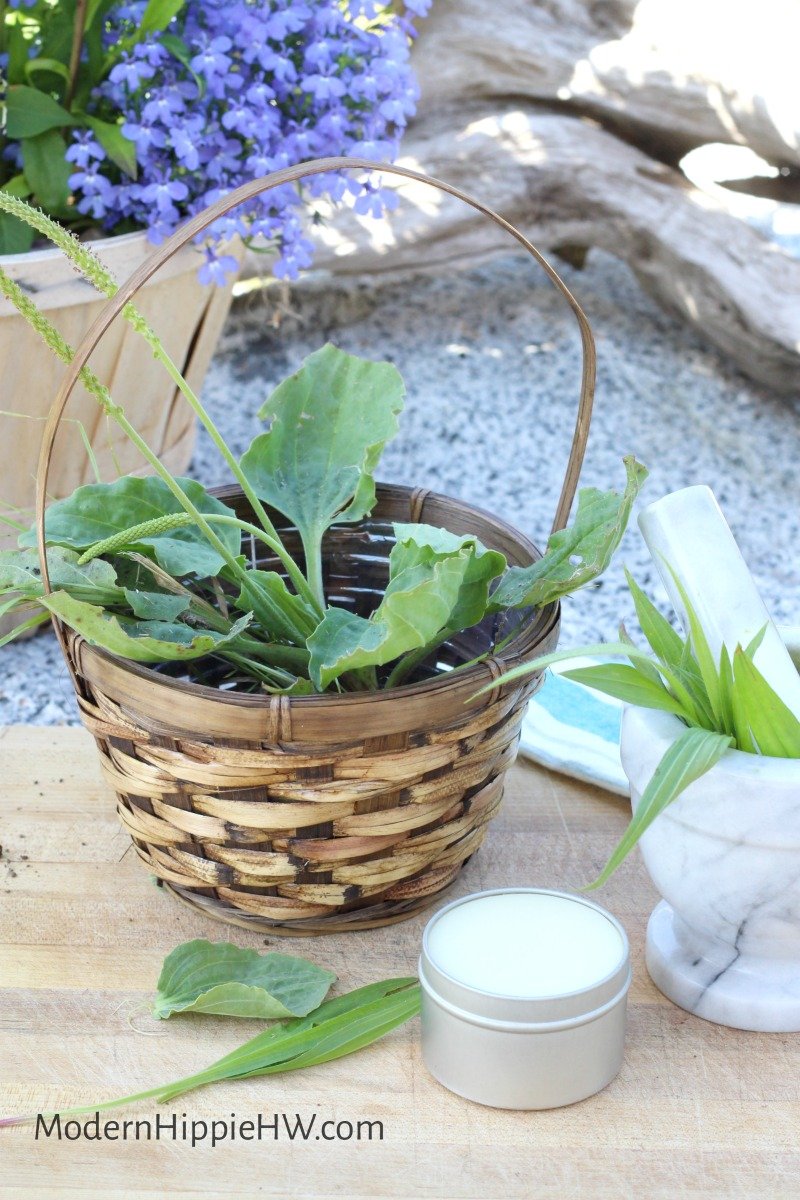
About Plantain
Although considered a common weed today, plantain (plantago major) has been used for hundreds of year, by many cultures around the world, for it's medicinal and healing properties. The Anglo-Saxons (450 A.D. to 1066 A.D.) listed plantain as one of their 9 sacred herbs and considered it to have great healing powers (source). Native Americans embraced this plant after it was brought over by the English and used it for wounds, bruises, boils and to reduce the swelling of rheumatic pains. They would also chew the roots to relieve toothache and heat the leaves to place on wounds (source).Perhaps most commonly, it's used topically to treat insect bites and stings, stinging nettle, poison ivy etc. and applied to scalds and wounds, providing pain relief, as well as decreasing minor bleeding due to it's coagulating properties.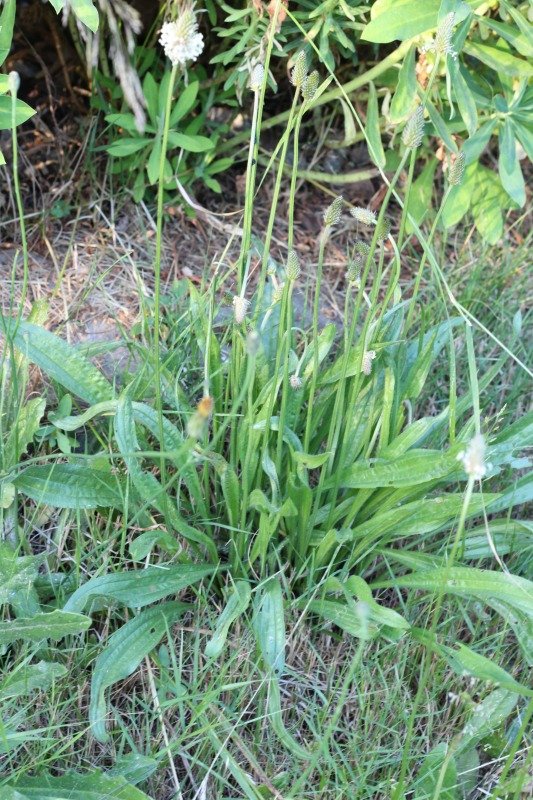 Plantain is also used internally to help relieve coughs, bronchitis, tuberculosis, sore throat, laryngitis, urinary infections and digestive problems. This more recent study suggests a "positive benefit-risk-ratio allows the recommendation of plantain in moderate chronic irritative cough, also especially for children."There are over 200 varieties of plantain around the world, but two are commonly found around where I live, on the West Coast of Canada - narrow leaf plantain (plantago lanceolata) and broad leaf (plantago major). Both have similar medicinal properties, and tend to grow in well-drained soil, meadows and along pathways and driveways.
Plantain is also used internally to help relieve coughs, bronchitis, tuberculosis, sore throat, laryngitis, urinary infections and digestive problems. This more recent study suggests a "positive benefit-risk-ratio allows the recommendation of plantain in moderate chronic irritative cough, also especially for children."There are over 200 varieties of plantain around the world, but two are commonly found around where I live, on the West Coast of Canada - narrow leaf plantain (plantago lanceolata) and broad leaf (plantago major). Both have similar medicinal properties, and tend to grow in well-drained soil, meadows and along pathways and driveways.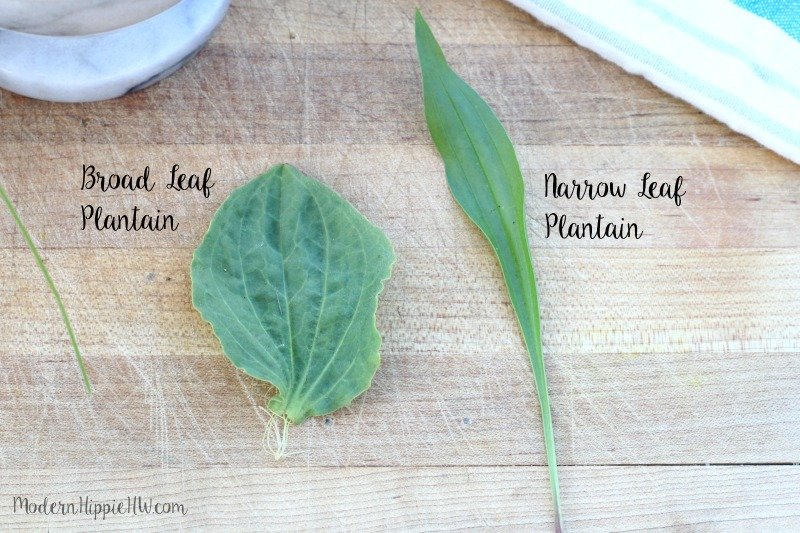
How to Use Plantain
Once aware of plantain, you start to notice it all around. After I read about it, I went out side to see if I could identify it myself it, and there was, growing along the sides of my driveway and along my front boulevard. It's also convenient to be able to identify it, as it's a handy summertime-remedy for all sorts of ailments.When harvesting plantain, you can use leaves from either the narrow leaf or broad leaf species. You can also use the root and the flower, but I find them harder to work with. Just ensure that you're harvesting the herb from a pesticide and pet-pee-free area.Wash the leaves in cold water, and at this point, you can either:
- dry them for future use (I use this method for drying herbs)
- wilt them in preparation for a tincture or oil infusion for salves (plantain salve recipe below)
- use them fresh to make a poultice (instructions below) or tea
In this article, I just want to show you how to use plantain externally for bug bites, stings and burns.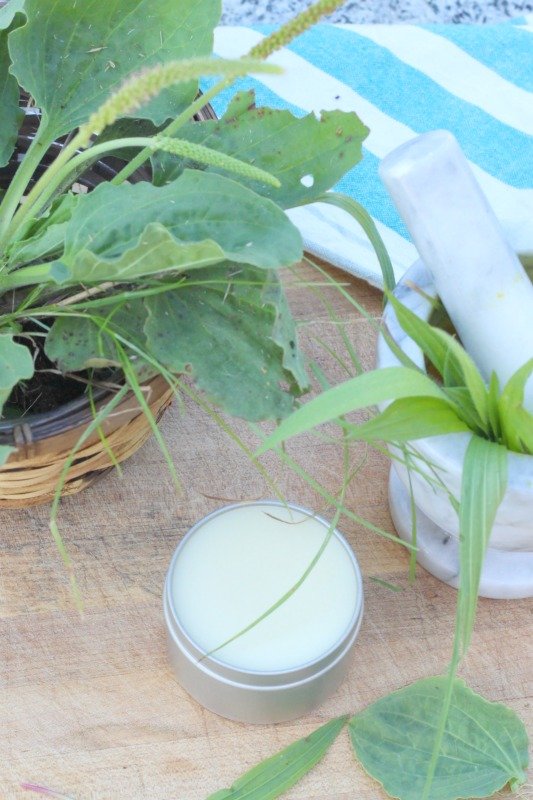
How to Use Plantain for Bug Bites, Stings and Burns
Using plantain topically can help relieve the pain and discomfort caused by bee stings, nettle, poison ivy, mosquito bites and minor burns including sun burns!I've found that the most convenient way to apply plantain is by making a poultice out of the fresh leaves or applying a plantain salve.
How to Make a Plantain Poultice
A poultice, by definition, is "a soft, moist mass of material, typically of plant material or flour, applied to the body to relieve soreness and inflammation and kept in place with a cloth."In the beginning of this article, when I explained that I chewed up plantain leaves and then placed the macerated wad on that poor little boy's bee string, this is precisely what I was trying to achieve - a poultice.If time allows, use a mortar and pestle, or even two stones, to mash the clean leaves into a paste. Apply the plantain directly to the sting, bite or burn. Of course, if time is of the essence, or you're applying the plantain to your own body, just use the good old "chew method". I doesn't taste bad....just a bit "grassy".
How to Make a Plantain Salve
A pre-made plantain salve is great to have on hand if you don't have access to fresh plantain, or you're going camping and can't confirm that plantain will be in the area. Applying the salve to a bite, sting or burn will provide relieve when in a pinch!The first step to making a Plantain Salve is to make plantain-infused oil.INFUSING OIL WITH PLANTAINS: gather plantain leaves and leave them to wilt on your windowsill for a day or two. If you don't have plantain in your area, you can use dried plantain like THIS. Fill a jar ½ -3/4 full with the wilted or dried plantain and cover with a liquid carrier oil like olive, avocado, sweet almond or grapeseed (don’t get too hung up on amounts). Leave to infuse on your window sill for 2-3 weeks before straining. Store strained oil in the fridge for future use. Complete infusion tutorial HERE.Ingredients
- 4 oz (114 g)Plantain-Infused Oil
- .5 oz (14 g) Beeswax, Organic
- 10 drops of each, Lavender and Tea Tree Essential Oils
MethodAdd the Plantain Oil and Beeswax to a glass jar or Pyrex measuring cup and melt over low heat using the “double boiler” method (place the jar of oils in a saucepan or pot of simmering water).Once the oils have melted, remove from heat and add essential oils.Pour into a small glass jar, or whatever you have on have that you can re-purpose, and seal with a lid.Applying the salve to so a bite, sting or burn will provide relieve when in a pinch!Will last for approximately one year, or longer if refrigerated.

